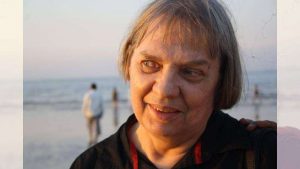
I recently watched the documentary Sugarcane (2024), an extraordinary journey into the horrors of Canadian Indian boarding schools and the healing journey that one father and his son—the filmmaker, Julian Brave NoiseCat—take as they fully face the truths of their experiences in relation to this system of colonization and oppression.
The story begins in 2021 with the discovery of more than 200 unmarked graves at the site of the Kamloops Indian Residential School, and the discovery of 50 graves outside the cemetery at St. Joseph’s Mission Indian Residential School on the Sugarcane Reservation in British Columbia. The schools were run by the Catholic Church, and much of the story is about the abuses perpetrated by Catholic priests. NoiseCat’s father, Ed Archie NoiseCat, was a resident of St. Joseph’s. The film makes clear the consequences of the trauma he experienced as a child, and how that trauma reverberated through to his son and their relationship.
We also meet other courageous individuals: residential school survivor Charlene Belleau, who now investigates these atrocities; Chief Willie Sellars of the Williams Lake First Nation, a young man who bears the task of speaking these truths to the public; and Rick Gilbert, former chief of Williams Lake First Nation, who travels to the Vatican for a meeting between Pope Francis and Indigenous Canadians.
Sugarcane was a difficult film to watch, but of course it was far more difficult for First Nations peoples to have gone through the experience. Any time I felt the need to turn away from what I was seeing, I tried to remember that and sat through my discomfort and, at times, even pain at what I was witnessing. It reminded me of sitting a weeklong Zen sesshin and working with feelings of emotional and physical discomfort, practicing presence rather than seeking an escape.
While the filmmakers, Julian Brave NoiseCat and Emily Kassie, are remarkably fearless in going deeply into and describing the details of what happened at these schools and how families continue to be impacted, the heart of the story is about healing and about the strength of a people to face devastating truths together.
Many years ago, when I worked on the Buddhist Peace Fellowship’s journal Turning Wheel, the editor Susan (Sue) Moon and I paid special attention to stories that exemplified the practice of “not turning away.” That felt like a core principle of socially engaged Buddhism, to learn how to look deeply into devastating situations without seeking easy answers or distracting ourselves from the pain associated with them. In fact, Sue even put together an anthology of some of the best articles from the journal, titled Not Turning Away (Shambhala 2004). Some of the stories in the book included Jarvis Jay Masters’s reflections on life on San Quentin’s Death Row, Marianne Dresser’s account of taking part in a Bearing Witness retreat at Auschwitz with the Zen Peacemaker Order, and Jenna Jordison’s story of responding to a letter from one of the men who murdered her father, whom she later meets in person. These and other stories convey the courage it takes to look directly into the vortex of human greed, hatred, and delusion, and the healing that is possible when we can do so.
I so much appreciate what Sue wrote in the preface to the book:
I have a great curiosity about how other people meet suffering. What do they do when they are afraid? What gives them the strength to reach out again and again, to people who have turned their backs in anger? What gives them the courage to ask a soldier to put down his gun?
While I don’t think the practice of “not turning away” is exclusive to Buddhism, it seems to me there is something about having a meditation or other kind of contemplative practice that makes it more possible to stay steady in the face of extreme suffering. In Sugarcane, over and over we see how the Indigenous people draw on Earth-based practices to be in a container large enough to hold the immense suffering of the story. In one scene, Julian and his father take what must have been an unbearably cold plunge into a lake as they seek to hold and digest all they have been learning about the incidents at the boarding school and their own lives. In another scene, Charlene smudges Julian with sage as they both take in how harrowing it is to look directly at the horrors of what unfolded at St. Joseph’s school.
The other element of the healing in Sugarcane is the remarkable way that individuals support each other, and that the community comes together to ensure that these stories are told. Even under the most excruciating circumstances, people are present for each other. I was reminded of how powerful sangha is in our Buddhist context, what it means to have a community of friends who make a commitment to “not abandon you,” to use my friend Alan Senauke’s phrase.
If you have a chance to view Sugarcane, I strongly encourage you to do so. I found it to be akin to some of the most powerful Dharma talks I’ve ever heard, offering us an embodied path toward wholeness and healing even in the face of the most extreme level of suffering.
See more
Sugarcane
Not Turning Away: The Practice of Engaged Buddhism (Shambhala)
Related features from BDG
Indigenous Haute Couture and Art: Tradition Meets Futurism in the Exquisite Creations of Jamie Okuma
Restoration and Justice: An Interview with Dr. Natalie Avalos on Indigenous Spirituality and Buddhist Allies
Buddhistdoor View: Indigenous Relations – Restoration and Restitution
Circles of Life and Death, Part One: Recalling Thich Nhat Hanh and Black Elk














